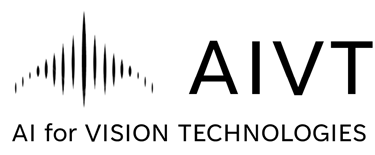Real-time Recognition & Tracking in Thermal Imaging
Detecting and following objects of interest with high accuracy, even in challenging environments.
Rytis BURAČAS
3/7/20252 min read


Thermal imaging has proven to be a valuable tool for object detection and tracking in scenarios where traditional visual cameras fall short, such as in low-light conditions, through smoke or fog, and in situations where heat signatures are crucial. However, achieving accurate and reliable real-time recognition and tracking of objects of interest, especially in challenging environments, has been a complex task.
Fortunately, the integration of artificial intelligence (AI) is revolutionizing thermal imaging capabilities. Advanced AI algorithms are enabling systems to detect and track objects in real-time with remarkable accuracy, even in the most demanding conditions.
Challenges in Real-time Recognition and Tracking
Several factors can make it difficult to achieve accurate and reliable real-time recognition and tracking in thermal imaging:
Low Resolution: Thermal cameras often have lower resolution than visual cameras, which can make it challenging to distinguish between objects with similar heat signatures.
Noisy Data: Thermal images can be noisy due to sensor limitations and environmental factors, which can interfere with object detection and tracking.
Dynamic Environments: Objects can move quickly or erratically, and the environment can change rapidly, making it difficult to maintain accurate tracking.
Occlusion: Objects can be partially or fully obscured by other objects, making it difficult to track them continuously.
AI-Powered Solutions
AI, particularly deep learning, has emerged as a game-changer in addressing these challenges. By training on large datasets of thermal images, AI algorithms can learn to:
Robustly Detect Objects: AI models can identify objects of interest with high accuracy, even in low-resolution or noisy thermal images.
Discriminate Between Objects: AI can learn to distinguish between objects with similar heat signatures by analyzing subtle differences in their thermal patterns.
Track Objects in Real-Time: AI-powered tracking algorithms can predict the future location of an object based on its past movement, enabling smooth and continuous tracking.
Handle Occlusion: AI can use contextual information and object appearance models to maintain tracking even when an object is partially or fully occluded.
Benefits of AI-Powered Real-time Recognition and Tracking
The ability to perform real-time recognition and tracking in thermal imaging has numerous benefits:
Enhanced Security and Surveillance: AI-powered systems can automatically detect and track potential threats, improving the effectiveness of security and surveillance operations.
Improved Search and Rescue: In search and rescue operations, AI can help locate missing persons or objects more quickly and efficiently.
Safer Autonomous Navigation: For autonomous vehicles, drones, and robots, AI-based tracking can improve navigation and obstacle avoidance in challenging environments.
More Efficient Industrial Processes: In industrial settings, AI can be used to monitor and track equipment, improving efficiency and safety.
Applications Across Industries
AI-driven real-time recognition and tracking in thermal imaging is transforming a wide range of industries:
Security and Surveillance: Border security, perimeter protection, intruder detection, and crowd monitoring.
Search and Rescue: Locating missing persons, detecting survivors in disaster areas, and tracking wildlife.
Autonomous Systems: Navigation, obstacle avoidance, and object tracking for self-driving cars, drones, and robots.
Defense and Military: Target recognition, tracking, and situational awareness in combat and reconnaissance operations.
Industrial Monitoring: Equipment tracking, quality control, and process automation in manufacturing and logistics.
The Future of Real-time Recognition and Tracking
As AI technology continues to advance, real-time recognition and tracking in thermal imaging will become even more sophisticated and reliable. Future systems may incorporate:
Multi-sensor Fusion: Combining thermal imaging with other sensors, such as visual cameras and LiDAR, to improve accuracy and robustness.
3D Tracking: Tracking objects in three dimensions to provide a more complete understanding of their movement and behavior.
Predictive Tracking: Anticipating future object movements to improve tracking performance and enable proactive responses.
The advancements in AI are enabling thermal imaging to reach its full potential, providing enhanced situational awareness and enabling more informed decision-making across a wide range of applications.
--- end ---
